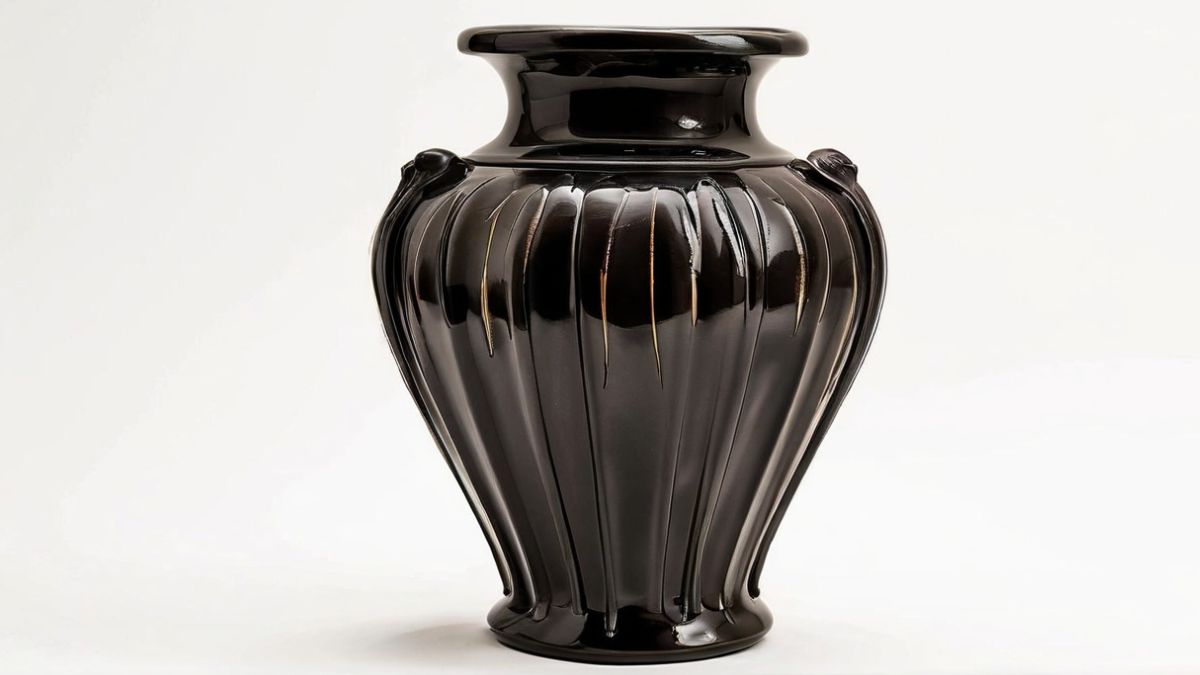Introduction to Weller Pottery and Matte Green Glaze
Weller Pottery matte green history 1910 is a name that resonates with collectors and art enthusiasts alike. Its rich history, particularly the enchanting Matte Green glaze produced in the early 1900s, tells a story of artistic innovation and cultural significance. Imagine vibrant colors blending seamlessly with earthy textures to create pieces that captivate the eye and stir the soul. This unique pottery not only adorns homes but also reflects a pivotal moment in American history—a time when craftsmanship met creative expression.
As we delve into Weller Pottery’s journey from clay to canvas, we’ll explore how its Matte Green creations shaped artistic movements and found their place in the hearts of many. Join us on this exploration of Weller Pottery Matte Green 1910 history, where each piece carries whispers of its past while continuing to inspire future generations.
History of Weller Pottery and its Evolution
Weller Pottery began its journey in the late 19th century, founded by Samuel Weller in Zanesville, Ohio. Initially focused on utilitarian wares, it quickly transitioned to decorative ceramics that captured the public’s imagination.
By the early 1900s, Weller embraced artistic influences and innovative glazing techniques. This shift marked a pivotal moment in American pottery history. The company started experimenting with various styles and colors, setting itself apart from competitors.
As time progressed, Weller introduced several notable lines. These included the beloved Matte Green glaze that gained immense popularity during the 1910s. Each piece reflected both craftsmanship and artistic flair.
The evolution of Weller Pottery mirrored broader trends in art movements of its time. The interplay between form and function became increasingly important as artists sought to create meaningful connections through their work.
The Popularity of Matte Green Glaze in the 1910s
The 1910s marked a pivotal moment for Weller Pottery. Matte green glaze emerged as a favorite among collectors and decorators alike. Its earthy, muted tones resonated with the public’s desire for natural aesthetics.
This era celebrated craftsmanship and authenticity. Matte green embodied these ideals perfectly, offering a subtle elegance that contrasted sharply with more vibrant glazes of previous decades. Artisans took pride in its hand-applied finish, which gave each piece unique character.
The popularity of this glaze coincided with broader trends in home decor during the time. It complemented the burgeoning Arts and Crafts movement, emphasizing simplicity and organic forms. Homeowners sought pieces that reflected their values—quality over quantity.
As demand surged, Weller Pottery responded by expanding its matte green line to include various shapes and sizes. This versatility made it ideal for diverse settings—from rustic cottages to urban apartments—all while maintaining an understated charm.
Influence on Art Nouveau Movement
Weller Pottery’s Matte Green pieces played a significant role in the Art Nouveau movement. This style embraced organic forms and intricate designs, reflecting nature’s beauty. Weller’s craftsmanship resonated with this artistic vision.
The smooth texture of Matte Green glaze captured light in a way that added depth to its shapes. Artists sought inspiration from floral motifs, which aligned perfectly with the flowing lines characteristic of Art Nouveau.
Designers appreciated how Weller pottery transcended mere utility. Each piece became a work of art, marrying function with aesthetic appeal. The bold colors and unique glazes were emblematic of the era’s departure from traditional ceramics.
Collectors admired these items not just for their practicality but also for their artistry. As Weller introduced more decorative elements, it solidified its place within this transformative period in design history.
Impact on American Arts and Crafts Movement
Weller Pottery played a pivotal role in shaping the American Arts and Crafts Movement. This movement emphasized handcrafted quality, organic designs, and a return to traditional craftsmanship. Weller’s creations embodied these ideals.
The Matte Green glaze represented more than just aesthetics; it symbolized a shift towards valuing art that was both functional and beautiful. Artists sought to connect with nature through their work, reflecting the natural world in their pieces.
Moreover, Weller’s focus on local materials aligned perfectly with the movement’s philosophy. The pottery not only showcased fine artistry but also fostered community engagement among artisans.
Collectors began to appreciate these works as valuable artifacts rather than mere household items. Each piece told its own story of skillful creation and cultural significance within this transformative era of American design.
Collectibility and Value of Weller Pottery Matte Green Pieces
Weller Pottery Matte Green pieces have become highly sought after among collectors. Their unique aesthetic and craftsmanship make them stand out in the world of ceramics. Each item tells a story, reflecting the artistry of the early 20th century.
Condition plays a significant role in determining value. Well-preserved examples can fetch impressive prices at auctions and antique shows. Some rare shapes or patterns might even command thousands of dollars.
Collectors are drawn not only to their beauty but also to their historical significance. The matte green glaze was innovative for its time, symbolizing a shift toward more modern design sensibilities.
As more enthusiasts recognize Weller Pottery’s cultural impact, interest continues to grow. This trend ensures that these exquisite pieces remain relevant today while preserving their legacy for future generations.
Modern Reemergence of Weller Pottery in Home Decor
Weller Pottery is making waves in the modern home decor scene. Its timeless elegance and rich history resonate with today’s design enthusiasts. Matte Green pieces, in particular, have found their way into contemporary spaces.
Homeowners appreciate the unique charm these items bring. Their earthy tones blend seamlessly with various styles—from rustic to minimalist. Each piece tells a story that captivates collectors and casual admirers alike.
Designers are incorporating Weller Pottery into curated displays and gallery walls. The textured surfaces create visual interest while adding depth to any setting. They’re more than just decorative objects; they evoke nostalgia paired with sophistication.
Social media platforms showcase stunning interiors featuring this pottery, inspiring new generations to embrace its beauty. Thrift stores and antique shops also see a rise in demand for these collectibles as people seek distinctive accents for their homes.
Preservation Efforts and Recognition as Cultural
Preservation efforts surrounding Weller Pottery focus on maintaining its rich history and significance. Dedicated collectors, museums, and historians collaborate to ensure that these artistic treasures are well-documented.
Organizations like the American Society of Appraisers often host workshops aimed at educating enthusiasts about proper care and valuation of their pieces. This knowledge helps safeguard Weller’s legacy for future generations.
Recognition as a cultural artifact has also increased over the years. Exhibitions showcasing Matte Green pottery highlight its artistry within broader contexts such as Art Nouveau and the Arts and Crafts movement.
Academic research continues to explore its impact on American ceramic traditions. As interest grows, so does appreciation for what Weller Pottery represents in American art history—a blend of craftsmanship, innovation, and aesthetic beauty that resonates even today.
conclusion
The journey through Weller Pottery Matte Green 1910 history reveals a rich tapestry of artistic expression. Each piece tells a story, rooted in tradition yet evolving with time.
Today, collectors and design enthusiasts alike celebrate its unique craftsmanship. The allure of matte green continues to captivate new generations.
As modern home decor trends shift towards authenticity, the distinctiveness of Weller’s creations stands out. They serve not merely as decorative items but also as conversation starters that bridge past and present.
Understanding this cultural impact enhances appreciation for these works. It reminds us that art is ever-evolving, reflecting societal values and aesthetics across eras.
Weller Pottery’s legacy endures, inviting all to explore its depths further.
FAQS
Weller Pottery Matte Green 1910 history is a fascinating topic that raises many questions. Here are some frequently asked questions to help you understand more about this remarkable art form.
What is Weller Pottery known for?
Weller Pottery, established in the late 19th century, gained prominence for its innovative glazes and artistic ceramic pieces. The company became particularly recognized for its various decorative styles and unique finishes, with Matte Green being one of the most notable.
Why was Matte Green glaze so popular in the 1910s?
The Matte Green glaze emerged as a favored choice during the early 20th century due to its rich color and soft texture. It resonated well with the Arts and Crafts movement’s emphasis on natural beauty and craftsmanship, making it highly sought after by collectors.
How did Weller Pottery matte green history 1910 influence other art movements?
The aesthetic qualities of Weller’s work played a significant role in influencing both the Art Nouveau movement and American Arts and Crafts movement. These influences can be seen in their organic forms, intricate designs, and commitment to showcasing handmade artistry.
Are Weller Pottery Matte Green pieces valuable today?
Yes! Many collectors value Weller Pottery Matte Green pieces significantly today. Their rarity combined with historical significance often leads to high prices at auctions or through private sales.
Where can I find modern uses of Weller Pottery in home decor?
Today, many interior designers incorporate vintage finds like Weller pottery into their projects. You can find these beautiful pieces featured prominently in eclectic homes or showcased alongside contemporary furnishings for a blend of old-world charm with modern aesthetics.
Is there any preservation effort underway for historic pottery like Weller’s?
There are various efforts focused on preserving ceramic arts from significant periods such as those represented by Weller Pottery. Museums host exhibitions while organizations promote awareness regarding these important cultural artifacts’ contributions to American heritage.










